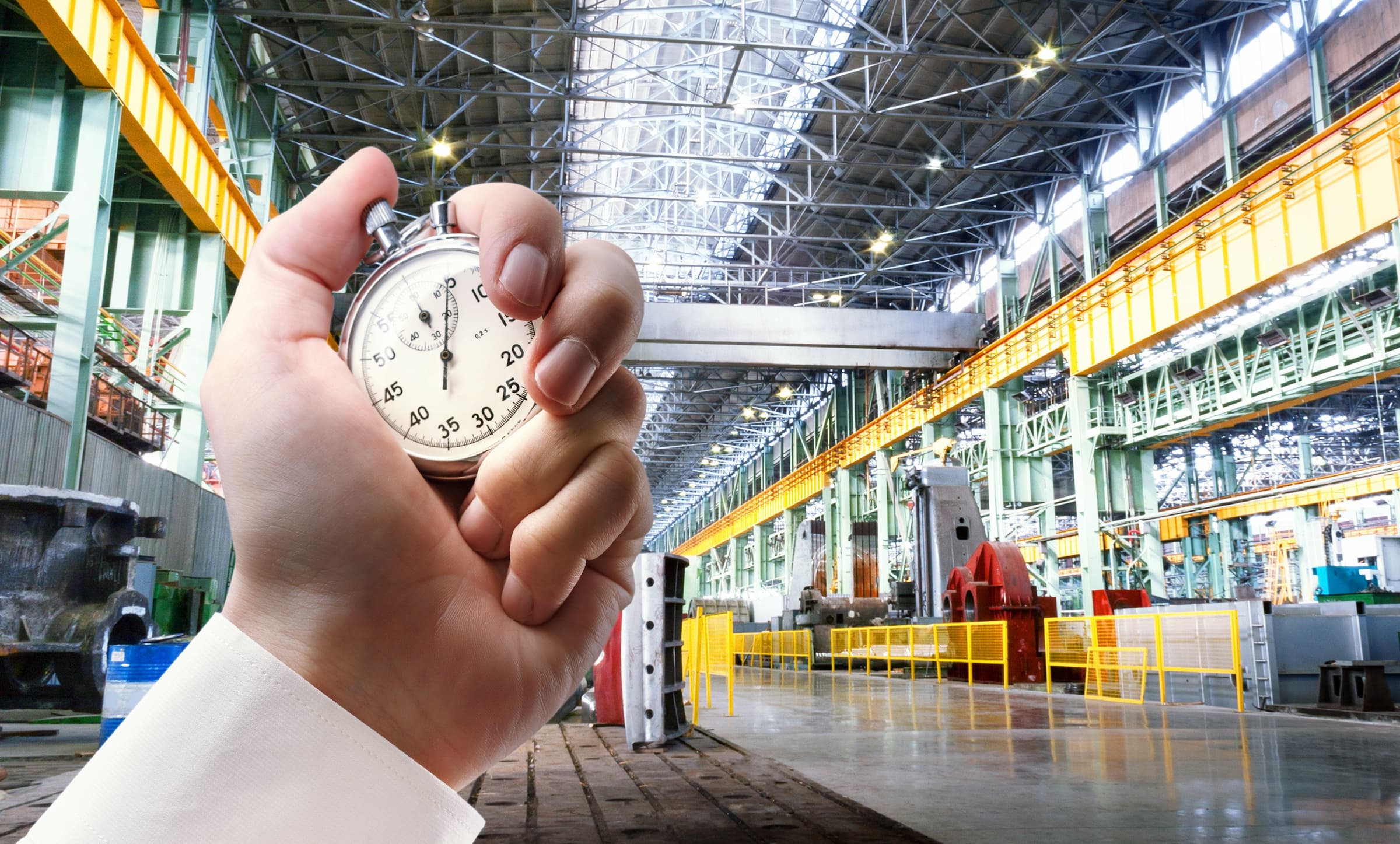In the pursuit of fully optimized manufacturing, there is one constant by which everyone eventually measures their productivity: time.
Producing the most quality product in the least amount of time is a hallmark of lean production, so it’s very relevant to your bottom line to conduct specialized time studies within your factory.
There’s a lot to take into account when designing these tests, however. The more precise your study requirements, the more accurate data you have to play with for increased optimization in production.
What Is A Time Study?
The first recorded time studies for businesses in industrial settings were conducted by Frederick Winslow Taylor in the early 20th century. He used a stopwatch to track run times of repetitive work cycles on factory floors.
Now known as one of the first managerial consultants for efficiency, Taylor created steel-process improvements that leant him great authority within industrial engineering.
His methods were simple: watch the production process and time each iteration with a stopwatch. It may seem rudimentary, but there is so much insight to be gained about operational efficiency by observing this very process.
Benefits of Conducting Time Studies
There are many reasons why you would want to conduct a time study on your shop floor in the modern era. In fact, you could design time studies for any number of process audits for more lean operations.
Here are some of the most common benefits of time studies:
It really depends on the scope and purpose of the time study you are designing.

Pro Tip : Keep your time study data over the years, even if older processes are no longer relevant to the processes you use today. The bigger data set you accumulate over the years, the more clearly MES and ERP software can condense those numbers into actionable insights.

Setting Up Your Time Study in a Manufacturing Setting
Frederick Winslow Taylor may have used a manual stopwatch, but there was much planning involved in setting up the parameters of his time studies.
Key Terms to Define In Time Studies
The first thing you need to know is some key terms that you will be tracking.
Normal time is the average time (across many recorded repetitions) for the process to be completed during the study.
Standard time refers to the standardized, actual span of time that it regularly takes for workers to complete a task. It includes factors called “allowances,” which are essentially things that you cannot eliminate for practical reasons.
Allowances are things that you can acknowledge are going to be forever present in manufacturing: fatigue, delay, and other personal reasons that human workers encounter.
When we calculate the standard time from normal time with allowances in mind, the equation looks like this:
Standard Time = (Normal time) x (1-allowances)

Pro Tip : This is NOT a good opportunity to be strict with your shop floor workers about personal performance metrics. After all, you’re not conducting the time study as a threat to work harder, faster. This is about replicating normal, everyday conditions in your factory. It’s best practice to communicate with workers that they will be timed in a study for optimization purposes, but that individual data points are not indicative of layoffs or raises.
Establish Goals & Benchmarks
If you are familiar with the basic principles of scientific management, then you already have a strong foundation for setting up your time study’s parameters.
If you are unfamiliar with scientific management, just be aware of the basic tenets of scientific hypothesizing, including all practical details of how, when, why, and what will be happening in the duration of the study.
Here are some helpful questions that you must answer before even pressing “start” on your metaphorical (or very real) stopwatch:
- What is the overall run time of your study?
- What is your sample size?
- Who will be managing the data?
- What process or subprocess is being targeted in this study?
- How many times will you repeat the study for more reliable data?
- Are the participants individuals or whole teams?
- Are you measuring the time difference between automation and manual actions performed in the same process?
- How granular are you getting in defining a “process”?
You should be recording these decisions in writing when designing the time study process so that everything is documented for later analysis. It also stands as an informative brief for any SOPs you later create from this study.
Above all, settle on the PURPOSE of your time study – if there are multiple reasons, divide them up into separate time studies so you don’t have too many variables conflating results.

Pro Tip : For each variable that you are NOT actively testing – workers, dates, shifts, etc. – make sure to have a varied sample size. For example, do not just test one regular shift of workers throughout the months. Don’t do all of your testing on the same day of the week over time. Make sure to have a sample size of workers with varied experience levels. This will eliminate unwanted bias in your data collection.

How to Record Your Time Study Data
Manual time recording can work just fine, but it’s not as efficient as digital recording methods.
These days in the era of Industry 5.0, it’s easier than ever to utilize the power of IoT devices for the most accurate and reliable reporting. By tapping into your IIoT network, you can have accurate time measurements down to the millisecond while your workers are following step-by-step work instructions for identical production processes.
And you can still go on a Gemba walk to boot – appoint an industrial engineer to oversee the implementation and results of the time study. With an expert managerial presence conducting the study and state-of-the-art autonomous systems recording real-time data, you’ll be optimizing your factory in practically no time at all.



